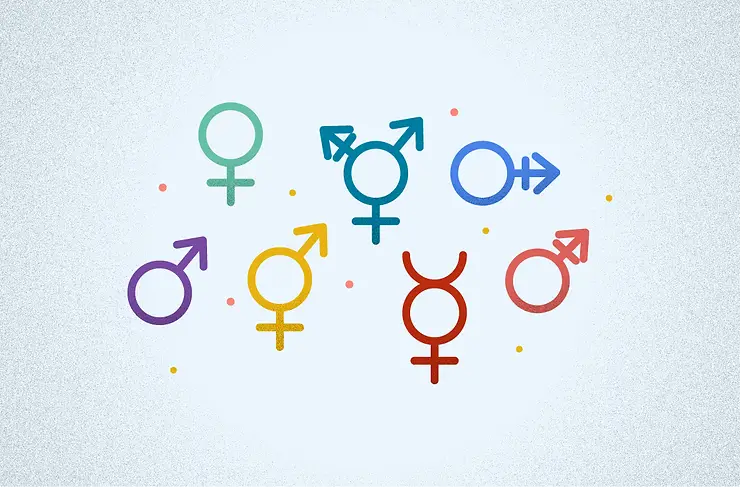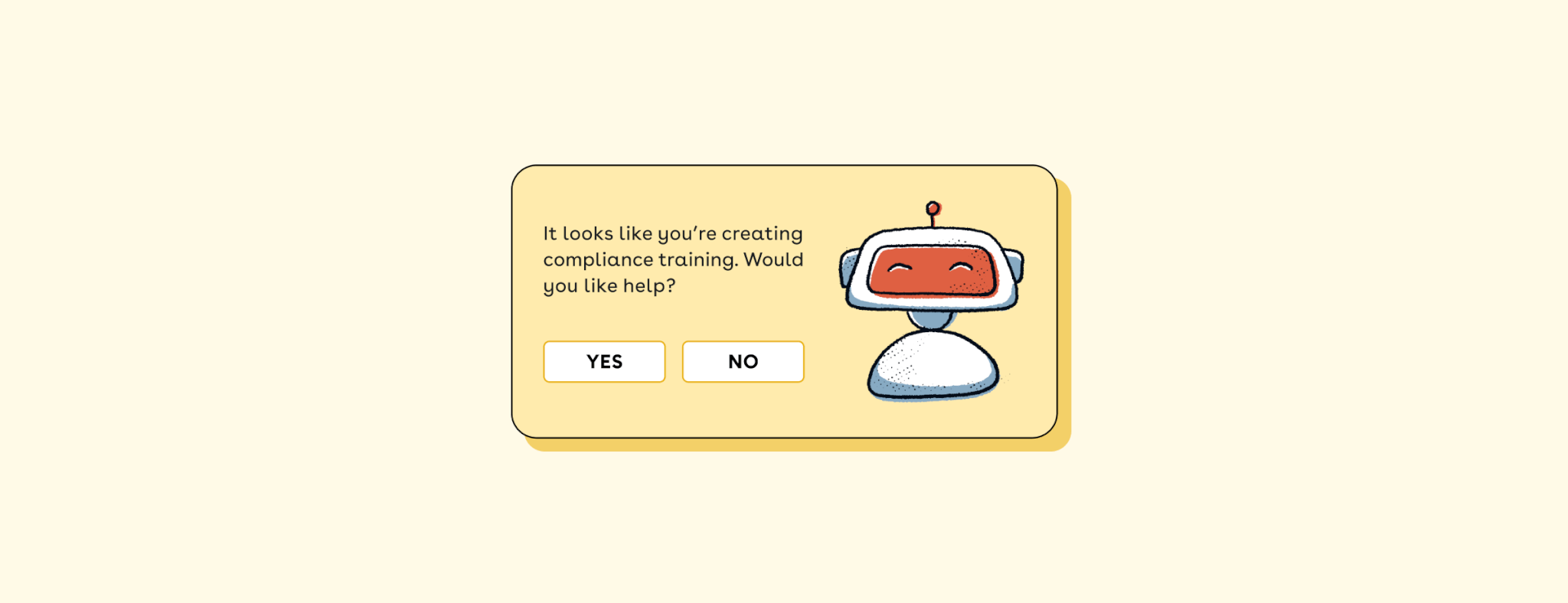The conversation around gender identity in the workplace has been evolving over the past decade–and for good reason. It's a complex subject to tackle with a lot of common mistakes to be made. But companies prioritizing an inclusive and safe work environment for their teams are succeeding at making gender identity inclusion a fundamental part of their culture.
Case in point: The investment bank Goldman Sachs, in 2019, made a pronoun guide for its employees while the Richard Branson-founded Virgin Group suggested employees use pronouns in their email signatures. Last year, outdoor clothier Patagonia produced the documentary They/Them, about a transgender climber. These and other companies and institutions have taken initiatives to create a more inclusive workplace.
Many gender-nonconforming employees have voiced that they would like to be acknowledged in a professional setting by their preferred gender, rather than an assumed gender a colleague might place on them.
What is gender identity?
A person's gender identity is the gender that a person identifies with, which may or may not conform with their physical appearance (gender-related appearance or behavior is called “gender expression”), or the sex they were assigned at birth. Perhaps their gender is male, female, neither, or on the spectrum of both.
Gender identity is not related to sexual orientation—being gay, straight, or bisexual, for example—but gender identity is how an individual feels about their gender on a personal level, inside. A lesbian employee might feel her gender identity is female, for example. Another employee might feel a personal gender outside the male-female gender binary, which is the notion that there are only two genders.
A 2022 study by UCLA School of Law, Williams Institute found that 1.6 million people 13 years of age and older in the US identify as being transgender, one type of gender identity. It’s a significant number, although tiny in the context of the US’s 330 million population. This may indicate that a large percentage of the US population who identify as male or female, their gender matching the one assigned at birth (i.e. cisgender people), have likely never thought extensively about gender identity issues until being made aware of it through others.
Many non-cisgender people (trans, nonbinary, agender, and others) have experienced gender dysphoria throughout their lives, an anxiety around one’s internal gender not aligning with the sex assigned at birth. This can lead to feelings of deep alienation, among other far more serious mental health issues. Even in 2022, many LGBTQIA people feel unsafe or uncomfortable sharing their real selves in the workplace and often remain closeted at work. Gender and sexual orientation were—and unfortunately still are—in many communities, considered a taboo subject that can lead to discrimination, harassment, and violence.
Since gender identity is deeply personal—and often private—those who don’t identify with expected gender norms can be reluctant to reveal their gender identity at work for fear of being shunned or excluded. But companies are increasingly providing resources on diversity, equity, and inclusion that include efforts to raise gender identity awareness by teaching a key phrases such as:
- Gender identity. How someone defines their gender, which might be male, female, neither, or both, somewhere on the male-female gender spectrum.
- Gender expression. How someone might express their gender identity outwardly, including through dress, behavior, or words.
- Sex assigned at birth. People are assigned a sex at birth, male or female, according to their physical traits such as sexual anatomy. When someone has physical traits that are not conventionally male or female, it's described as intersex.
Gender identity vs. gender expression: what’s the difference?
Gender identity is how an individual identifies their gender internally. This could be outside the male-female gender binary, no gender, or various genders elsewhere on the spectrum. Gender expression, however, is the outward expression of gender, perhaps through clothing choices, mannerisms, and words. Some people put maximum effort into expressing gender, making very deliberate choices. While for others, the effort is more measured.
Gender expressions labeled “masculine” or “feminine” can be subjective. For example, men have been wearing knee-length skirt styles known as kilts in Scotland for centuries. Meanwhile, women have been wearing men’s suits and fedoras—often viewed as expressions of masculinity—for decades. Who’s to say if pairing a seafoam, ruffly ball gown with a motorcycle jacket and combat boots is an expression of any particular gender?
Gender expression through clothing, as well as mannerisms, is not the most reliable indicator of gender identity, which is why preferred pronouns are becoming increasingly popular in the workplace. Written or spoken, preferred pronouns—listing “she/they” or “he/him,” for example, in introductions, email signatures and work bios—takes the guesswork out of how a colleague identifies and how they wish to be acknowledged.
Types of gender identity
Everyone has a gender identity and gender expression, here are the basics:
- Transgender/trans. Describes someone whose gender identity does not correspond to the sex they were assigned at birth. A transgender person might identify as a man, woman, or outside the male-female gender binary.
- Cisgender/cis. Describes a male or female who identifies with the gender they were assigned at birth.
- Nonbinary. Describes a person who identifies their gender as something that doesn’t align with the male-female gender binary, meaning not necessarily male or female. It also can describe someone who identifies as having no gender or multiple genders.
- Gender fluid. Describes someone whose gender identity is ever-changing, so it can shift and flow, perhaps identifying as more male on one day; more female the next.
- Genderqueer. Another word for nonbinary.
- Gender expansive. An umbrella term often used to describe anyone who identifies as transgender and nonbinary.
- Agender. Describes someone who does not identify with any gender.
It’s important to note that the catalog of gender identities is rich, diverse, subtle, and expansive and that "transgender and nonbinary" may not apply to or totally resonate with every individual impacted by what we cover here, especially intersex people who make up about 1.7% of the population. We thoughtfully use these terms going forward to provide the widest umbrella and to maintain clarity, but we recognize these terms are not exhaustively representative of all gender experiences.
Gender identity in the workplace
Ideas around gender identity can be relatively new to people outside the LGBTQIA community. For some, gender identity might sound like a far too private topic to discuss or even acknowledge at work. But education on gender identity and using gender-sensitive language can be constructive and make for a more inclusive work environment.
Some companies encourage the company-wide use of preferred pronouns. For example, listing preferences—“he/them,” “she/her,” or the gender-neutral “they/them,” for example—whether written on a name tag or verbally stated at meetings or work events, directly address potential misgendering.
According to a 2019 Pew Research Center report, one-in-five adults in the US knows someone who goes by gender-neutral pronouns. Using preferred pronouns lets gender-nonconforming employees state how they’d like to be acknowledged. Standardizing usage in things like introductions, Zoom names, and email signatures helps create a safer, more inclusive environment. After all, we all have preferred pronouns, and no one should make assumptions about our gender identity.
Gender identity can be a tricky subject, and it’s ok to feel anxious about mistakes. You don't have to be right all the time, but you do have to try to get it right.
FAQs about gender identity in the workplace
Is it rude or helpful to ask someone at work about their gender identity?
It’s better if you offer your pronouns when introducing yourself and let your colleague volunteer their pronouns and/or gender information on their own terms. Some people are very private about their gender identity; others are comfortable being public.
Are gender identity and sexual orientation the same thing?
No. Gender identity is separate from sexual orientation. The two have often been linked (and gender identity and sexual orientation share a common acronym, LGBTQIA), but gender identity and sexual orientation are separate concepts. Gender identity refers to the internal feelings someone has about their gender, while sexual orientation refers to the various groups of people someone finds romantically or sexually attractive.
I’m cisgender and supportive of gender identity inclusivity, why do I feel embarrassed using preferred pronouns at work?
Most new behaviors feel awkward at first, but with practice, it gets easier. A good starting point is to add preferred pronouns to your emails, bios, and profiles. It’s an easy first step to take, and it’s simply a respectful way to acknowledge non-cisgender colleagues.
Final thoughts
While gender identity may sound too personal a subject to address in the workplace, even a cursory understanding of gender identities can create a more inclusive workplace where everyone feels seen and respected. Plus, we owe it to one another to continue educating ourselves and treating each other with respect. An ever-learning working environment typically translates to a more creative, productive, and supportive team.
For more information about our Harassment Prevention and DEI training courses, and how to save time and simplify your compliance training administration, set time with our team.










